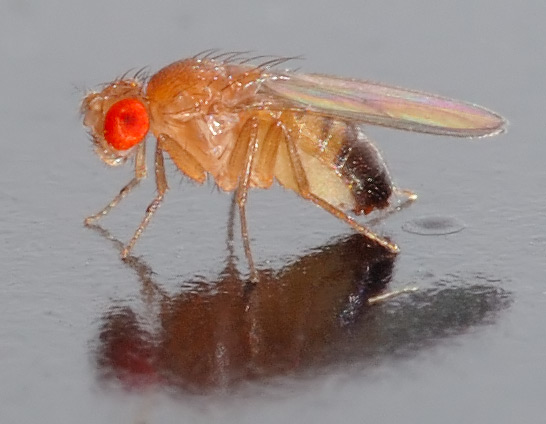
- "Drosophila melanogaster - side (aka)" by André Karwath aka Aka - Own work. Licensed under CC BY-SA 2.5 via Wikimedia Commons -
Researchers at the University of California at San Diego were interested in understanding how exposure to low oxygen concentrations impact heart function. For humans low oxygen delivery to the heart can occur with exposure to high altitude, respiratory diseases, inflammation, blood clots and during a heart attack when there is inadequate blood flow to the heart muscle. The results of their study were recently published in the American Journal of Physiology - Regulatory, Integrative and Comparative Physiology.
The team exposed fruit flies (aka: Drosophila melanogaster) to low oxygen conditions consisting of 1-4% oxygen(hypoxia) for 30 minutes, 18 hours or 3 weeks and then returned the flies to normal atmospheric oxygen (21% oxygen). They found that flies exposed for 18 hours or 3 weeks had impaired heart function after the flies were returned to normal atmospheric oxygen. In contrast, animals exposed to acute hypoxia (3 hours) maintained normal function.
When they raised Drosphila in low oxygen conditions for 250 generations, they found that the offspring not only had altered heart function evidenced by reduced heart rate and contractility, their hearts were also smaller and the muscle fibers disorganized compared to generations of animals raised in normal oxygen conditions. These findings suggest that chronic hypoxia alters the development of the heart at the genetic level.
Source:
- Log in to post comments
